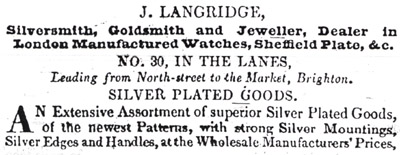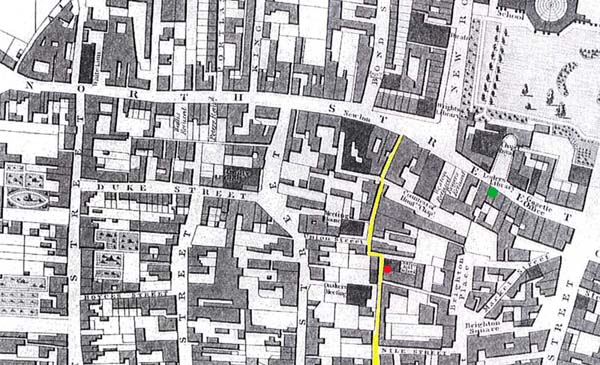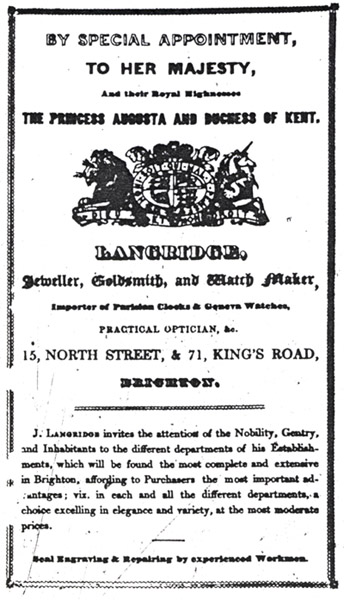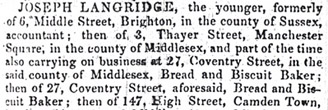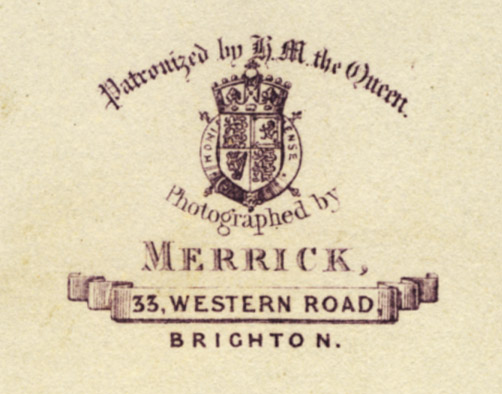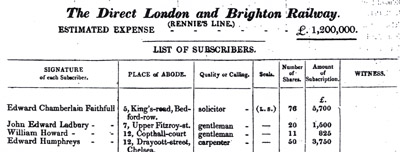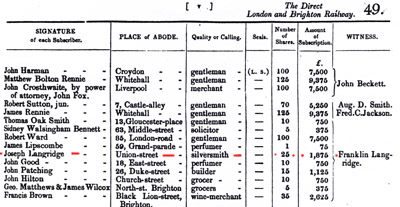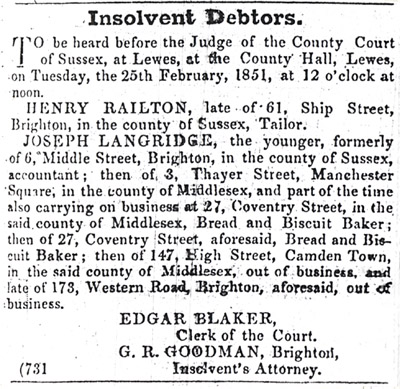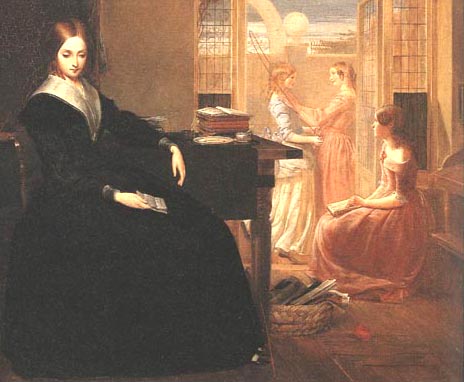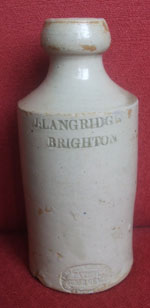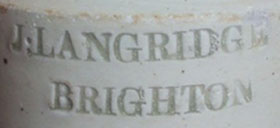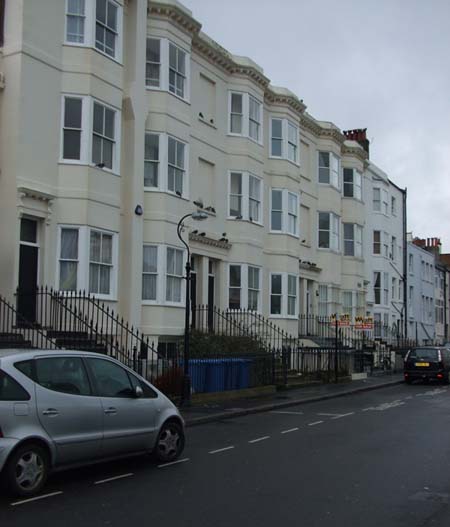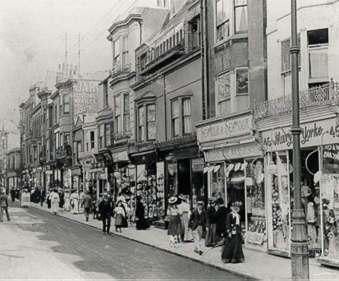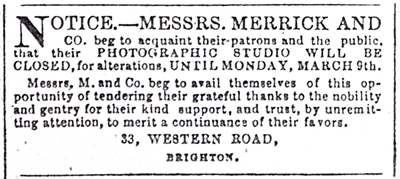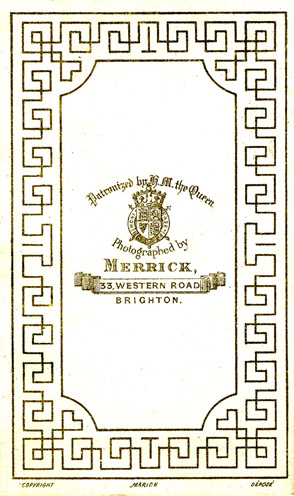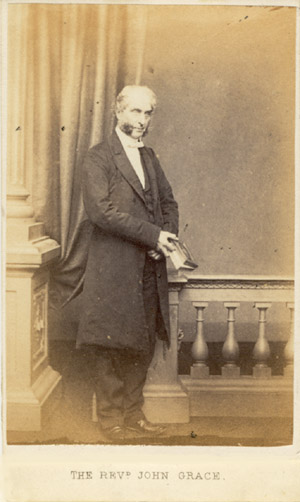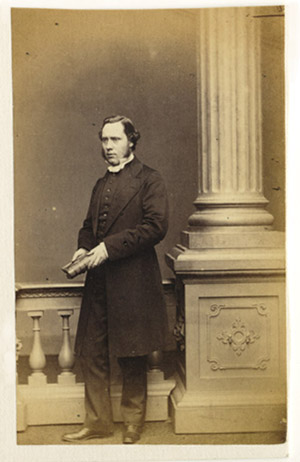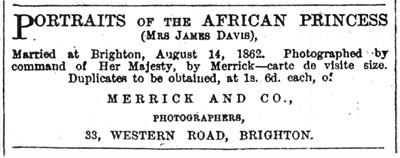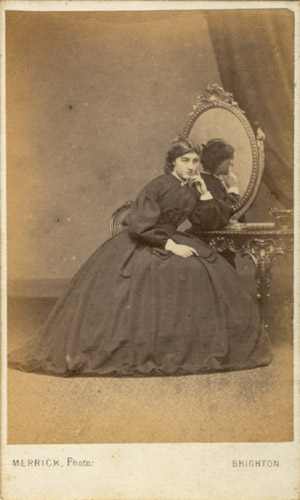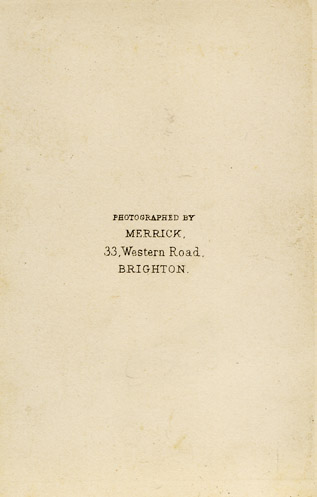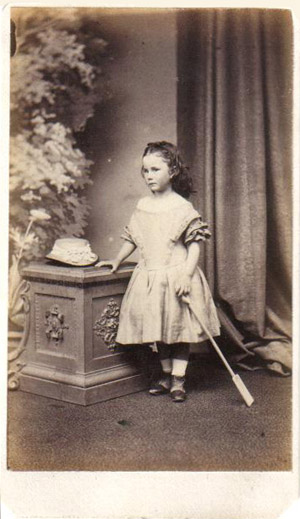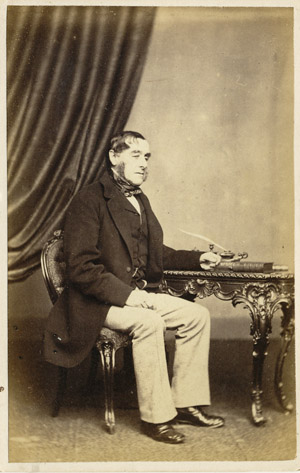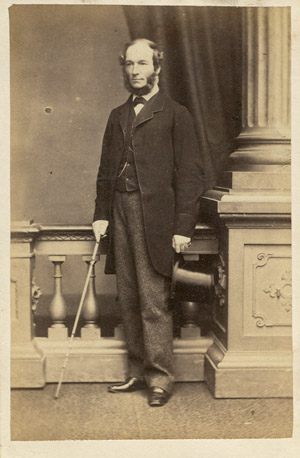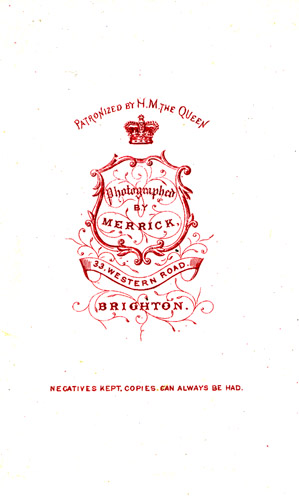|
Photographic
Artists in Western Road, Brighton (1854-1856) |
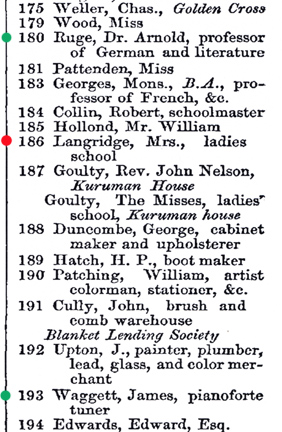 |
 |
[ABOVE] The occupants of houses in Western Road, Brighton, as listed in
the Street Directory published in W. J. Taylor's "Original Brighton &
Hove Commercial Directory, issued in July 1854. Mrs Annie Langridge was
running a Ladies' School at 186 Western Road and her husband Joseph Langridge (wrongly printed as Joshua Langridge in Taylor's Brighton Street
Directory) is shown as a "soda water manufacturer" at No. 203. The
only person described as a "photographic artist" on this page of the
Street directory was Jesse Harris (misprinted as "Isse Harris")
at 213 Western Road, Brighton. James Waggett,
a pianoforte tuner at No. 193, Mrs Agnes Ruge, the wife of Dr Arnold Ruge,
the German professor at No.180, and William Lane, printseller and carver &
gilder at 213 Western Road, were all earning a living by taking photographic
portraits within two years of the publication of Taylor's 1854 Directory.
Sometime before September 1856, Joseph Langridge adopted the pseudonym of
"Merrick" and
established a photographic portrait studio at his residence at Regent
House, 186 Western Road, Brighton. (see directory entry below).

[ABOVE] An extract from Melville & Co.'s Directory and Gazetteer of
Sussex (published in September 1858), showing Merrick & Co.,
photographists, at Regent House, 186 Western Road, Brighton, listed
alphabetically in the "Trades & Professions" section of the Brighton
Directory. The photographic studio of Merrick & Co. at 186 Western Road,
Brighton made its first appearance under the heading of "Photographic and
Talbotype Galleries" in the 1856 edition of Folthorp's Brighton Directory
(corrected to September 1856).
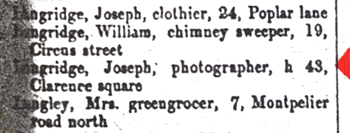
[ABOVE] An extract from Melville & Co.'s General Directory of
Brighton, published in 1858, showing Joseph Langridge as a
photographer at 43 Clarence Square, Brighton. The local trade
directories published during this period list the firm of Merrick & Co.
as photographic artists at 43 Clarence Square and 33 Western Road,
Brighton. |
When Joseph Langridge
was released from Lewes Gaol at the end of 1851, there was only one
photographic portrait studio in Brighton - The Photographic Institution
at 57 Marine Parade, Brighton.
The proprietor of The Photographic
Institution was William Constable (1783-1861), who, in 1841, had purchased a
licence to take daguerreotype portraits in Brighton. Holding an exclusive
licence from the owner of the daguerreotype process, William Constable had a
virtual monopoly in the production of photographic portraits in Brighton
during the dozen years between November 1841 and 14th August 1853, the date
when the daguerreotype patent expired.
William Constable's monopoly in the production of photographic portraits was
briefly challenged in the Summer of 1852 by Joseph
Meurant, a French daguerreotype artist from Paris and William
Lane
(1818-1889),
a picture frame maker who made photographic portraits on glass using the
recently invented "wet collodion" process.
When the patent
restrictions on photographic portraits were removed in August 1853, several
Brighton residents set themselves up as photographic artists. W .J. Taylor's
Original Directory of Brighton, compiled for the year
1854, lists ten photographic portrait studios :
Edward COLLIER 58, King's Road
Charles and John COMBES 62, St James's Street
William CONSTABLE 57, Marine Parade
Lewis DIXEY 21, King's Road
Robert FARMER 59 & 114 North Street
GREY & HALL 13, St James's Street
Jesse HARRIS 213, Western Road
HENNAH & KENT 108, King's Road
William LANE 213, Western Road
Madame Agnes RUGE 180 Western Road
Joseph Langridge, who
operated as a "soda water manufacturer" and "fish curer" from business
premises at 203 Western Road, Brighton, could not fail to notice that
three of the photographic portrait studios were located in Western Road.
Mrs Agnes Ruge, the wife of German professor Dr. Arnold Ruge, was taking
daguerreotype portraits at their family home at 180 Western Road,
only six doors down from Langridge's own residence at 186 Western Road,
then used as a ladies' school by his wife, Mrs Annie Langridge.
Sharing premises at 213 Western Road, were two photographic artists,
Jesse Harris (1825-1892) and
William Lane
(1818-1889),
the carver & gilder who had been taking photographic portraits on glass
since September 1852. By 1856, James Waggett (1818-1888), a
pianoforte tuner by trade, was taking photographic portraits at 193
Western Road, Brighton.
Sometime before
September 1856, Joseph Langridge established a photographic portrait
studio under the name of Merrick & Co. at
Regent House, 186 Western Road, Brighton, a building that had
previously been used as a "Ladies' School" by Langridge's wife, Mrs Annie
Langridge. Perhaps because of his previous financial difficulties
experienced under his real name of Joseph Langridge, the founder of the studio at
186 Western Road, Brighton, decided to operate under the
studio name of "Merrick" (a name derived from his mother's maiden
surname of "Merricks"). The photographic studio of Merrick & Co. at
186 Western Road, Brighton made its first appearance under the
heading of "Photographic and Talbotype Galleries" in the 1856 edition of Folthorp's Brighton Directory
(corrected to September 1856). Melville & Co.'s Directory and Gazetteer of
Sussex of 1858 also lists Merrick & Co. as "photographists" at Regent House, 186 Western Road, Brighton.
However, Melville & Co.'s Directory of Brighton, published in 1858,
records Joseph Langridge as a photographer at 43 Clarence Square, Brighton.
This is clear evidence that by 1858, Langridge had shifted his business operation
from 186 Western Road, Brighton to premises that spanned 43 Clarence Square
and the connecting shop at 33 Western Road, Brighton. Folthorp's Brighton Directory
of 1859 lists
Merrick & Co. as "Photographic Artists" at 33 Western Road & 43 Clarence Square, Brighton. Another entry in Folthorp's Brighton Directory
of 1859, provides a small clue to the real identity of the proprietor of
Merrick & Co. The "Street Directory" section of Folthorp's Brighton Directory
lists the occupant of 43 Clarence Square, Brighton as "Joseph L.
Merrick", yet Melville & Co.'s Directory of 1858 had recorded Joseph Langridge
as the "photographer at
43 Clarence Square, Brighton. The 1861 census also clearly
shows Joseph Langridge, described as a 48 year old "Photographic
Artist", as the occupant of 43 Clarence Square, Brighton.
All the evidence suggests that "Merrick"
was the pseudonym of Joseph Langridge. No person with the surname of
Merrick is recorded in the 1861 census of Brighton and the only Merrick that
appears in Brighton street and trade directories during the period of Joseph
Langridge's involvement in photography is "Merrick & Co." The business
addresses of "Merrick & Co." published between 1856 and 1873 correspond to
the residences of Joseph Langridge and his family during the same
period.
|

